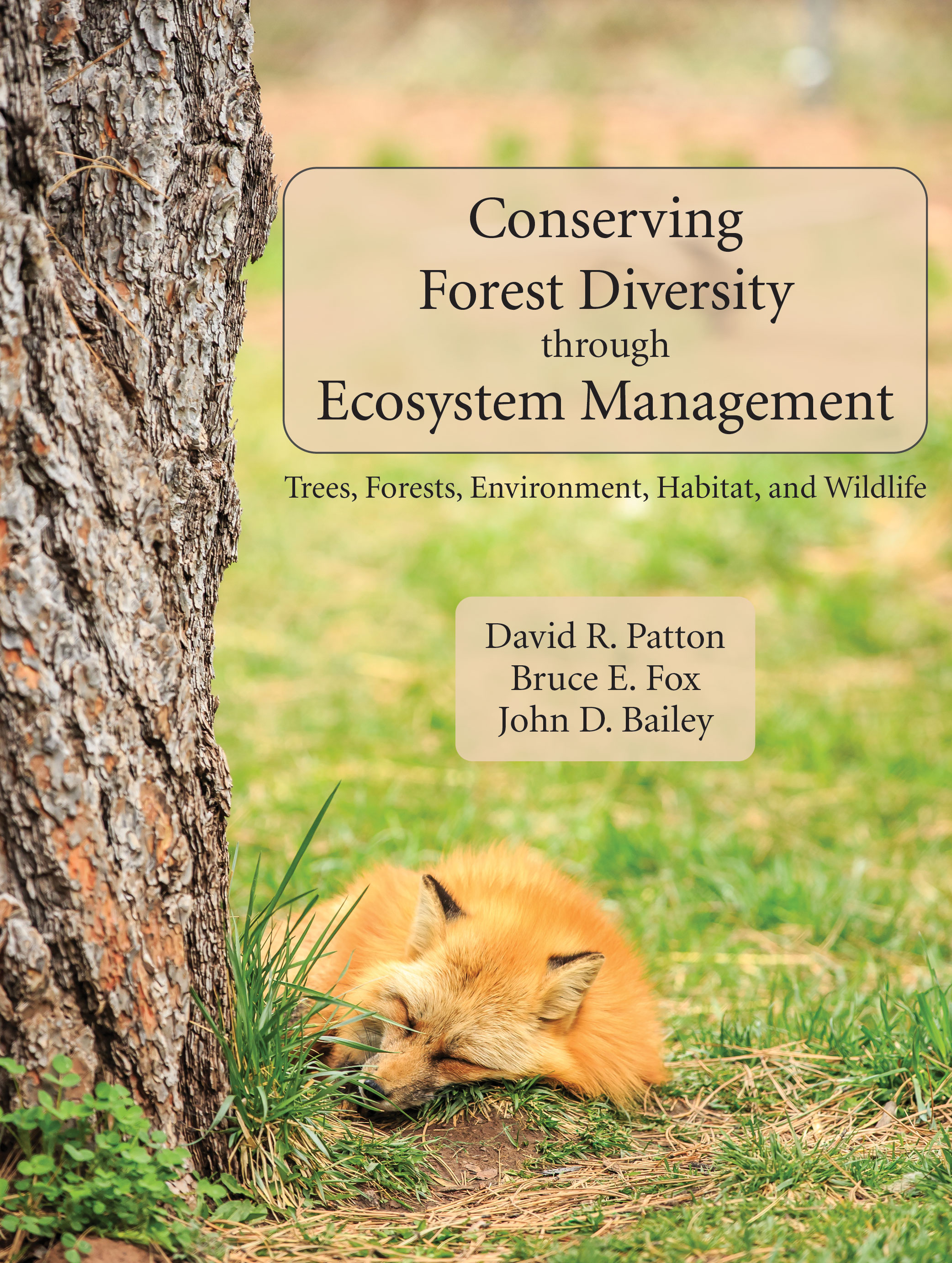1. In the Beginning
A Biotic View of Land / All About Trees / Where Are the Trees? / Summary
2. The Forest for the Trees
Forests Are Ecosystems / Classification Schemes / Vegetation Succession / Forests and Woodlands / Where Are the Forests? / Where Are the Habitats and Wildlife? / Summary
3. The Big Issues
Land Tenure / Forests and the Wildland Urban Interface / Wildland Fire / Climate Change and Drought / Exotic and Invasive Species / Outdoor Recreation / Forest Economics / Summary
4. Knowing the Land
Multi-Resource Inventory / Inventory Design / Information to Collect / Maps for Management / Who Is Where? / Evaluating Habitat / Summary
5. Doing the Work of Conservation
Forest Conservation Management / Silvilculture and Prescriptions / Forest Regulation and Scheduling / The Ever-Present Role of Time and Space / Summary
6. All Creatures Great and Small
Conserve and Manage / Biological Factors / The Environment of Wildlife / Habitat—A Special Place / Wildlife Management Strategies / Summary
7. All Things Wild and Wonderful
Forest Planning: The Big Picture / Resource Planning / Planning Process / Decision Support Systems / Planning and the National Environmental Policy Act / Lessons Learned / Summary
8. Knowledge from Literature
U.S. Department of Agriculture / U.S. Department of Interior (USDI) / Land-Grant Colleges and Universities / Foundations, Societies, and State Agencies / A Working Library / From Literature to Data Models / A Basic Forest Wildlife Habitat Relationships Model / Where Are the Alligators? / Summary
Epilogue: We Are Not at the End—Yet
Appendix A: Common and Scientific Name, Scientific Code, Life-Form, and Kingdom (A and P), Alphabetized by Common Name
Appendix B: Tree Species and Their Tolerance to Shade
Appendix C: Natural Range of Hardwoods in the Continental U.S. and Alaska
Appendix D: Natural Range of Conifers in the Continental U.S. and Alaska
Appendix E: Bird and Mammal Checklist of Species in Forest Regions
Appendix F: Synopsis of Bird and Mammal Life History

279 pages, $62.95 list
1-4786-3785-4
978-1-4786-3785-1
© 2020
paperback
eBook availability
Similar Titles
Conserving Forest Diversity through Ecosystem Management
Trees, Forests, Environment, Habitat, and Wildlife
Forestry, wildlife, and other natural-resource professionals manage ecosystems. Ecosystems bring together diversity in a way that considers all life-forms within a unified system. Patton, Fox, and Bailey present introductory students with an integrated, balanced approach to ecosystem management based on the concept of diversity—a natural phenomenon of life with different levels of recognition that can change over time and space.
Applying decades of teaching, research, and management experience, the authors introduce readers to each major life-form. Sections on significant forces that have shaped our landscape and how it is managed orient students in the field. Insightful approaches to the planning process are highlighted. Specific instruction on effective management practices includes inventory design, decision support system development, and database organization. Carefully curated library recommendations and appendices comprised of invaluable data sets prepare readers to navigate an extremely complex planning environment.
Data from Appendix A can be downloaded here.
Applying decades of teaching, research, and management experience, the authors introduce readers to each major life-form. Sections on significant forces that have shaped our landscape and how it is managed orient students in the field. Insightful approaches to the planning process are highlighted. Specific instruction on effective management practices includes inventory design, decision support system development, and database organization. Carefully curated library recommendations and appendices comprised of invaluable data sets prepare readers to navigate an extremely complex planning environment.
Data from Appendix A can be downloaded here.